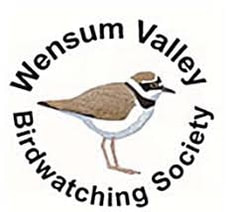|
Speaker: Dr Paul Noakes Reporter: Sue Gale For our second virtual indoor meeting we were lucky to welcome Paul Noakes, who is a local GP but more importantly, a Swift enthusiast and expert. The response to this talk has been without exception enthusiastic. It was not just full of great information, it was also of practical help to those who would like to encourage Swifts to nest on their homes. Paul is a real fan of the Swift, a bird he regards as unique and remarkable. Its life is almost completely aerial, everything except nesting being done on the wing. The Swifts we know in the UK are not able to perch or walk – all four claws point forward so it can only manage to climb vertical surfaces. This also explains its need for a lofty nesting site with clear access routes for easy entry and take-off. A Swift on the ground is stranded without help. The Common Swift is the one we know, and we have all heard them flying in screaming groups around our houses, collecting hundreds of insects in a food bolus to take back to their offspring. They arrive in three main waves, the first of which is normally in the first week of May in Norfolk: These will be adult birds looking to nest, mainly at nests sites already known to them. Swifts are very site-faithful, even to the nearest few inches! 2-3 weeks later the second wave is of 2 to 3 year old birds looking to nest for the first time: They will
24 probably have a site in mind, often an existing colony. The third wave arriving a further 2 or 3 weeks later will be first-year birds that will not breed but will explore the area, learning where the colonies are and trying out possible sites. Obtaining a nest site is the second of the two big events in the life of a Swift (after fledging) and once they have one, they will not move unless the site is destroyed. Mostly they breed for the first time at 4 years old, laying 2 or 3 eggs. The young can cope with adverse conditions because they put on so much fat, becoming heavier than the adults. If needs be, they can call on this before they fledge at 42 days. Sadly, though, many Swifts never find a suitable nest site. Swift numbers are declining, and one of the main reasons for this is habitat loss. This is mostly our fault! Repaired roofs may have no holes left for nesting, and new builds only rarely make provision for Swifts. So that is where we can step in and help. We can provide a home for Swifts. If only it was that simple! Because they are so cautious about adopting sites, it can take years of perseverance before they finally settle in the nest boxes we provide. To have a chance of success we must put up the boxes (and more than one is preferable) in the right sort of place. This must be as high as possible and with an unimpeded flight path. The box should contain a nest cup, which helps by saving time on nest construction. This alone won’t be enough – you must also play the calls of Swifts to attract their attention and make them feel that this is a safe site. The calls are not always popular with the neighbours so it pays to target good weather, and to do this in June and July. If this all sounds very complicated there is plenty of advice available on-line. Both ‘Action for Swifts’ and ‘Swift Conservation’ have excellent websites offering advice on how to proceed and where you can buy the necessary boxes, sound equipment etc. Paul ended his talk with some specific advice for members who had submitted photos of their current or proposed nest box sites. This was not only valuable for those individuals but it also gave us a real feel for what is the right way to attract Swifts. Many thanks are due to Paul for an excellent evening, and for his willing perseverance when the technology wasn’t up to the job on the first attempt.
0 Comments
Leave a Reply. |
Please feel free to read through our reports from our monthly indoor / online meetings. Archives
May 2024
Categories |

 RSS Feed
RSS Feed
